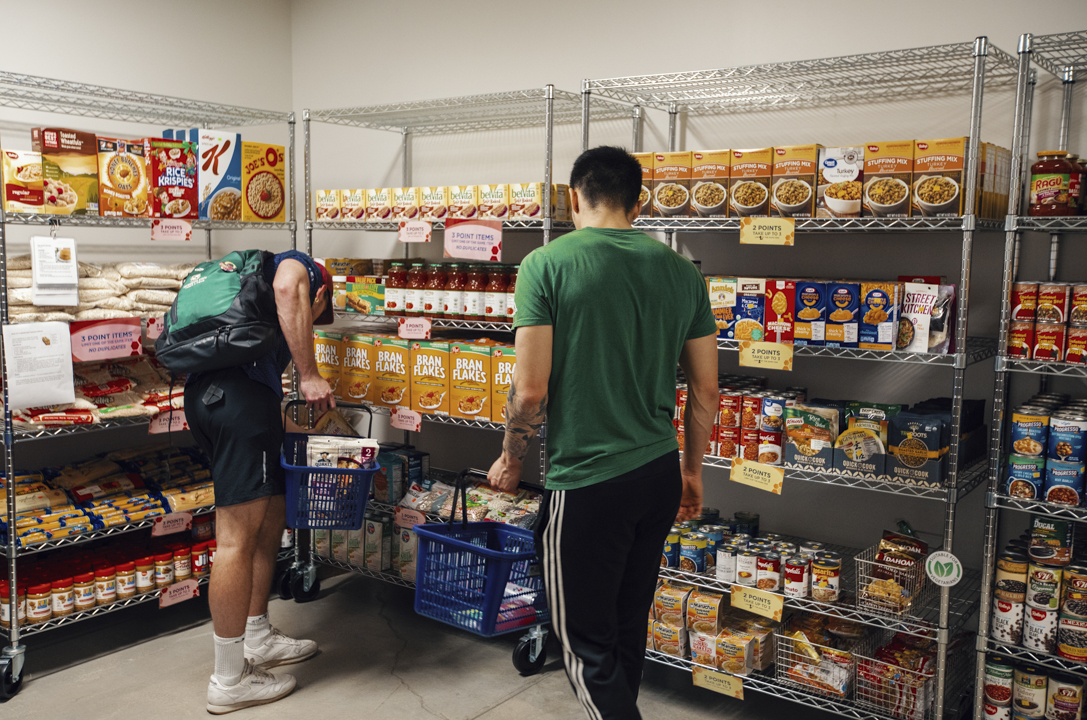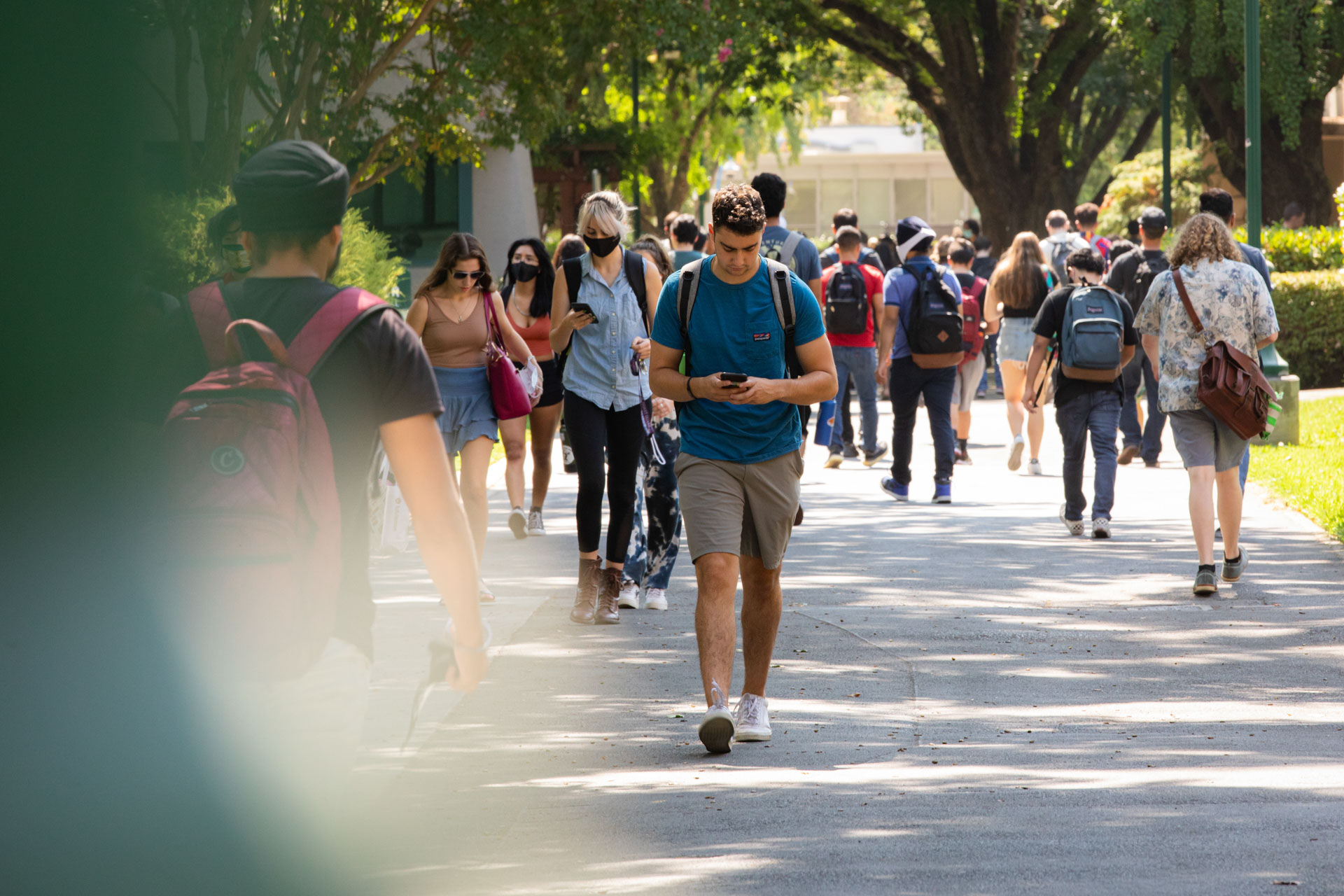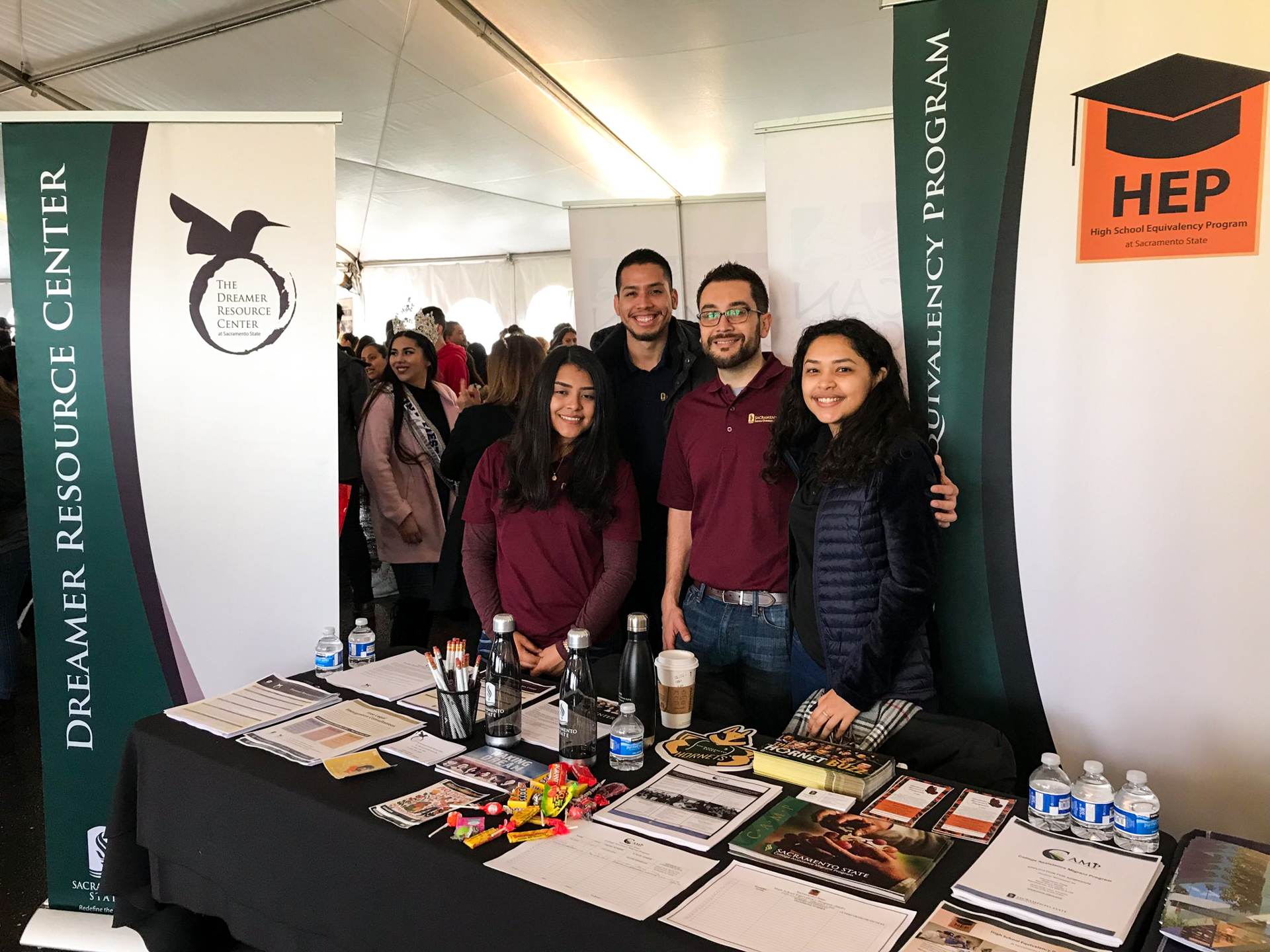Story Content
Sac State celebrates 25 years of students giving back to their community
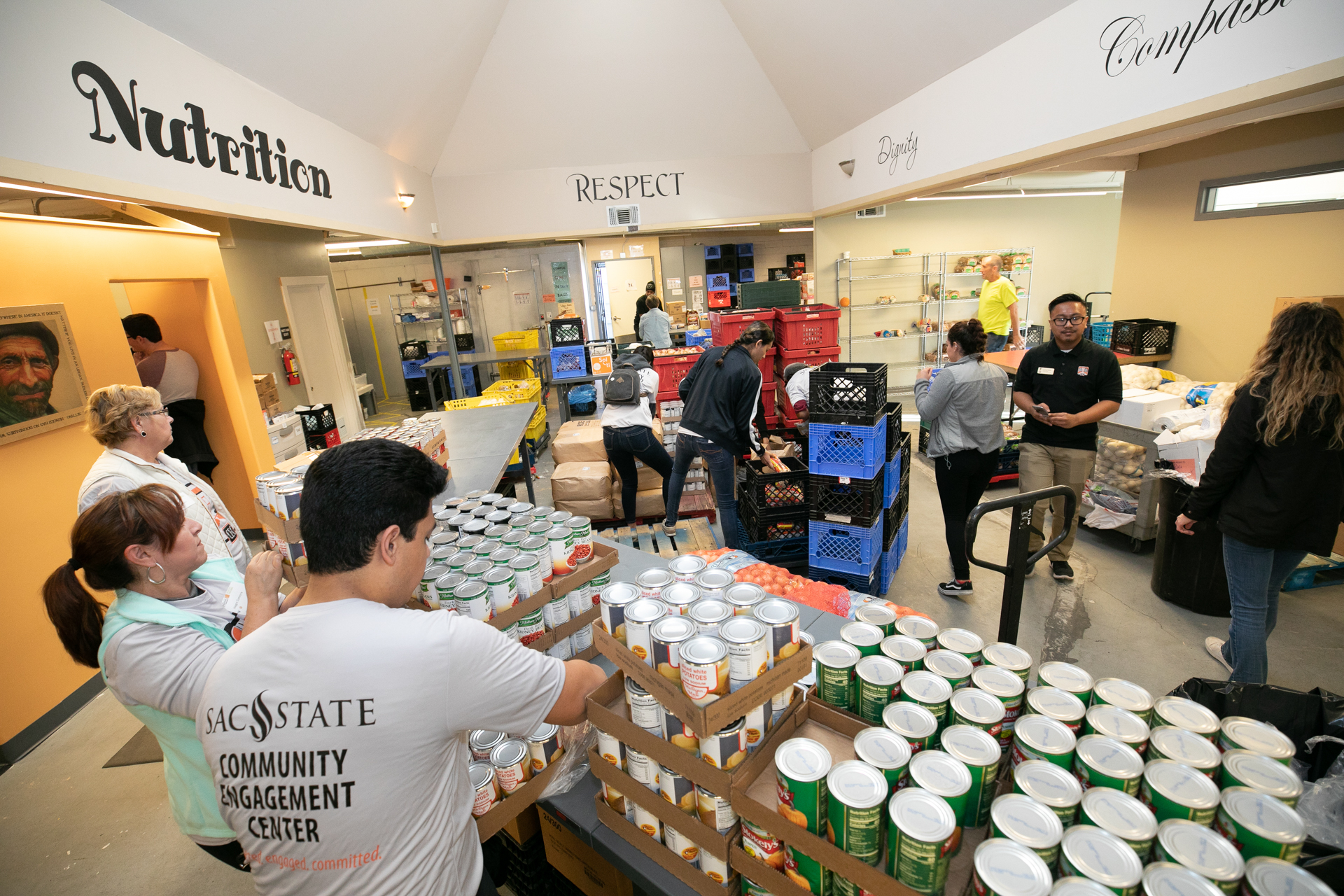
October 12, 2021
Sacramento State students extricated hundreds of pounds of trash from American River near campus during September’s community-wide Great American River Clean-Up.
In just three hours, 80 student volunteers amassed a soggy pile of shoes, socks, boots, clothing, bottles, aluminum cans, a frying pan, chairs, a child’s stroller, yards of fishing line, a propane tank, a bed frame, and more.
“The students were so motivated, because they realize how vulnerable our water system is,” said Ann Moylan, director of Sac State’s Community Engagement Center (CEC), which partnered with the Student Environmental Organization on the project.
“It’s a powerful experience to be a part of something where people come together and can see immediate results.”
As the CEC prepares to celebrate its 25th anniversary, it can point to countless such “powerful experiences” as examples of the legacy it has built. Through the center, thousands of Sac State students give their time annually to nonprofits and other agencies throughout the Sacramento area.
Students can volunteer through Alternative Spring Break or participate in a service-learning course or academic internship.
Because of COVID-19 restrictions, the Sept. 18 Great American River Clean-Up was the CEC’s first organized event since a group of students picked fruit with Harvest Sacramento in early March 2020.
“As an Anchor University, community engagement is at the heart of all that we do at Sacramento State,” said President Robert S. Nelsen. “The CEC develops our students into leaders who truly understand the impact of service, benefiting not just our Hornet Family, but the entire Sacramento region.”
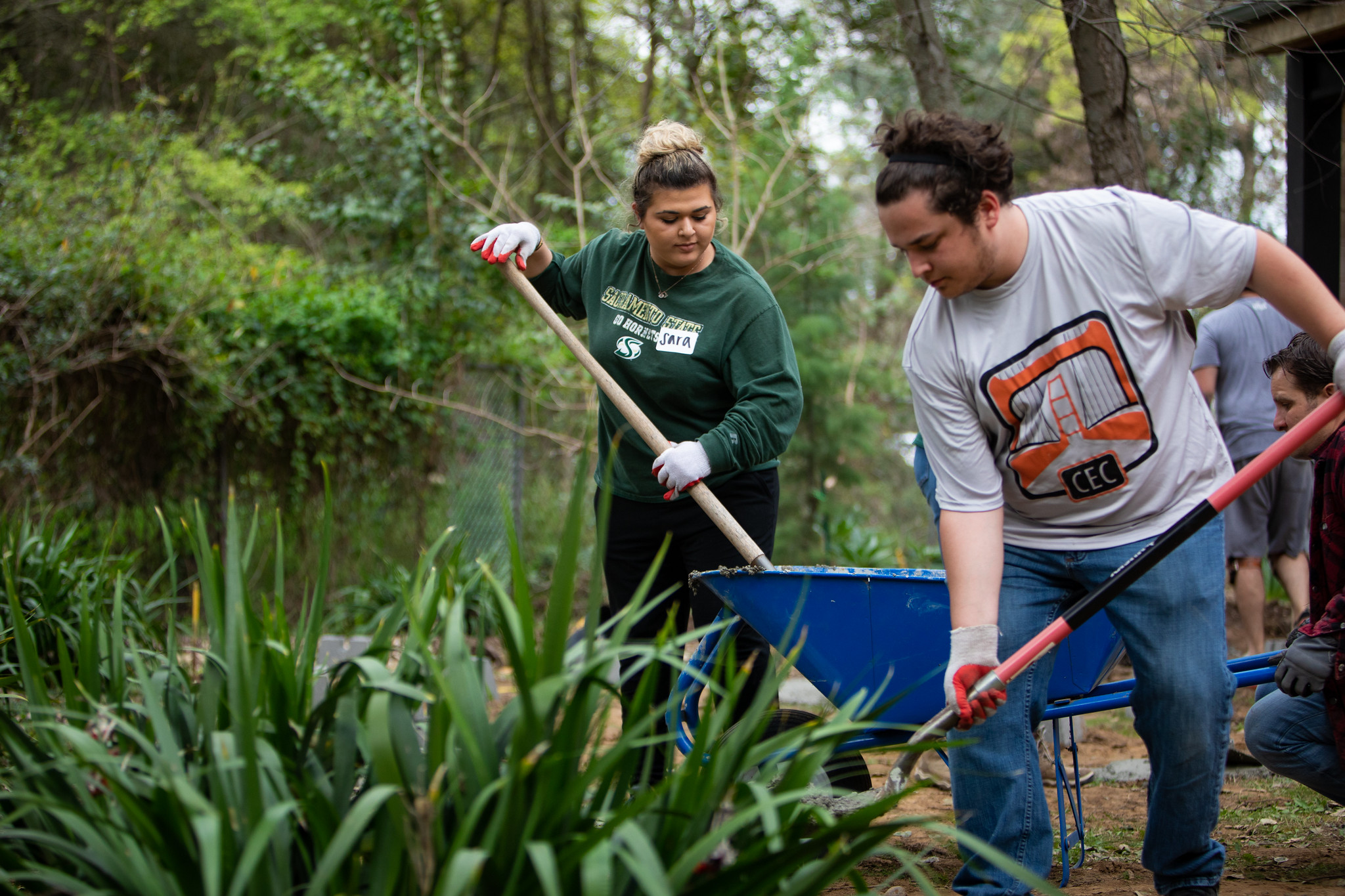
Nelsen will join Provost Steve Perez, three CSU trustees – Larry L. Adamson, Romey Sabalius, and Krystal Raynes – and former CEC director Dana Kivel and other dignitaries to celebrate the center’s silver anniversary Wednesday, Oct. 13.
The CEC began in 1996 as the Office of Community Collaboration (OCC). Charlotte Cook, a professor of Special Education, noted that most Sacramento State students hail from the Sacramento area, which offers a “terrific opportunity” for them to get involved in their hometown.
“We can affect the region’s future by bringing students face-to-face with the region’s issues and challenges, its people, government entities, and major employers,” said Cook, OCC’s first director.
In 2007, the Office of Community Collaboration was renamed the Community Engagement Center to more accurately reflect its work.
Service learning has been integral to the organization’s mission from the beginning. Students spend time with a nonprofit or service agency where they put into practice the theories they learn in the classroom.
Two years after OCC was launched, Environmental Science students built raised-bed vegetable gardens and a butterfly garden for the children of Evergreen Elementary School as a part of their service learning.
Today, the University offers 70 service-learning courses. Over the six years before COVID-19 caused a campus shutdown, more than 16,000 students contributed approximately 300,000 hours of service at 1,000 community partner sites. One such site is River City Food Bank, where students regularly assist with the agency’s massive Thanksgiving food distribution.
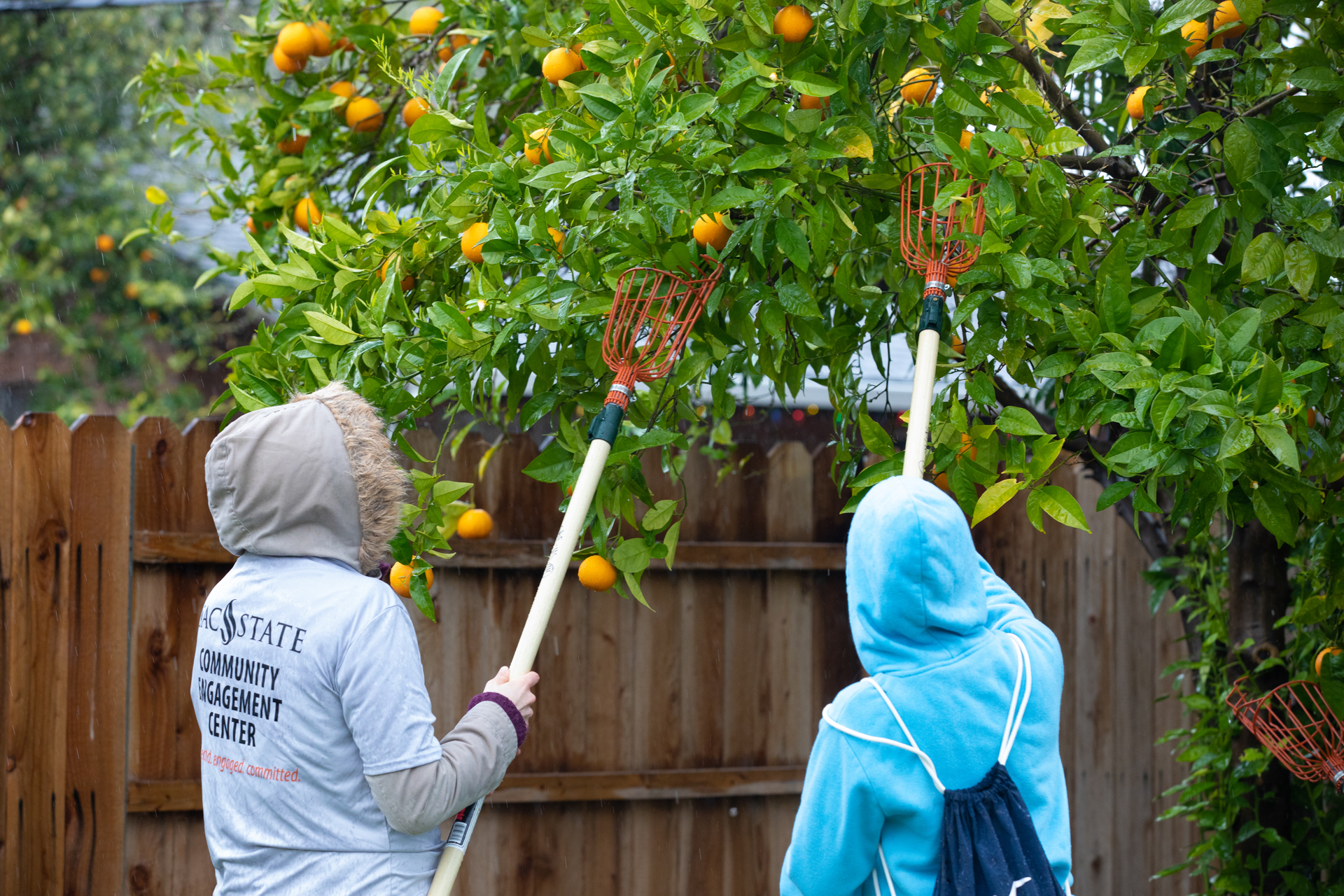
“River City Food Bank is proud to partner with Sacramento State students and the Community Engagement Center to serve our neighbors in need,” said executive director Amanda McCarthy.
“Volunteers are critical to our mission, and we are grateful for their support to provide health and hope to the community.”
The food bank served 231,000 people in 2020, a 30% increase over the previous year, driven in part by hardships related to the pandemic. Sac State students will be there to help again this November.
COVID-19 restrictions also were responsible in delaying the CEC’s plans to expand its service-learning opportunities overseas, in Ireland.
“Part of our mission is teaching students and training them to enter the workforce, and I think the implicit assumption is that we’re also teaching students how to be good citizens and helping them understand the role they must play to make their community better,” said Kivel, who ran CEC from 2014 to 2020 before returning to full-time teaching in the Department of Recreation, Parks, and Tourism Administration.
Alternative Spring Break, during which students spend their week away from classes doing good for others, was launched in 2007 and has had an indelible impact on the community.
In 2016, for example, the CEC partnered with Sacramento Area Congregations Together to send 99 Alternative Break volunteers into South Oak Park, an area with historically low voter turnout. The students knocked on 700 doors and registered 50 new voters.
Alternative Break had its first “field trip” in 2018, when a dozen students helped residents of Santa Rosa and Sonoma recover from wildfire devastation. Students bagged 5,000 pounds of carrots at the Redwood Empire Food Bank and took inventory at Habitat for Humanity’s ReStore.
Among CEC’s other achievements:
- Jumpstart, a nonprofit that trains and prepares college students to work with preschoolers, launched in September. Participating Sac State students can earn a $1,300 education award from AmeriCorps and units of course credit.
- Network Café, a networking platform, came to Sac State and the CEC in January 2020, after 17 years with Sacramento Food Bank and Family Services. CEC hosts virtual get-togethers each month with members of the campus community and local nonprofits.
- CEC led the months-long, campus-wide effort to earn the 2020 Carnegie Community-Engagement Classification, a prestigious endorsement from the Carnegie Foundation for the Advancement of Teaching. Sac State was one of just 119 U.S. universities and colleges to receive that certification last year.
- The Writing Partners Program has grown tremendously in recent years, with 4,500 K-12 students and 3,000 Sac State students participating.
- CEC expanded its Constitution Week programming to include a civic engagement component in 2014, and 40 students painted a house in South Oak Park as a part of NeighborWorks Sacramento’s
- “Paint the Town.” Five years later, the number of participating students increased to 100.
In 2020, CEC took the lead in coordinating campus-wide events relating to the presidential election and distributed “We Vote. We Count” T-shirts to students registered to vote.
“Sacramento State exists to serve our community, and the CEC plays a critical role in deepening and strengthening our ties to and impact on the Sacramento region,” Nelsen said.
25 years of community partnerships
The Community Engagement Center partners with hundreds of nonprofits and other agencies in the Sacramento area, giving students a chance to serve as volunteers or through service learning.The CEC serves several important agencies in the community. These are some of them:
- Clara’s House, a free health clinic for the uninsured. Students enrolled in the Certificate Program in Spanish for Healthcare Professionals (HEALS) translate for Spanish-speaking patients.
- Project RIDE offers horseback-riding instruction to people with disabilities. Students design and teach riding lessons for children age 3 and older.
- River City Food Bank serves local families in need. During Thanksgiving week, students sort and package holiday dinners.
- Harvest Sacramento is a project of Soil Born Farms. Students gather surplus fruit and vegetables from backyards and small orchards to be donated to local food-assistance agencies.
- A Touch of Understanding gives schoolchildren the opportunity to experience what it’s like to be different. Sac State students volunteer at disability-awareness workshops.
Media Resources
Faculty/Staff Resources
Looking for a Faculty Expert?
Contact University Communications
(916) 217-8366
communications@csus.edu
